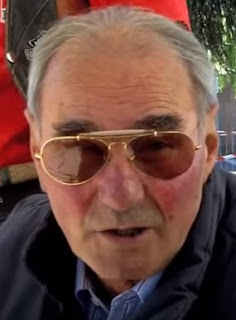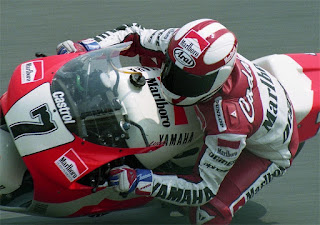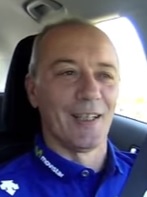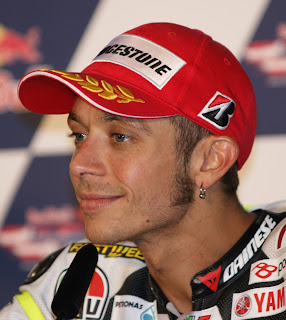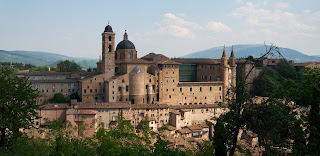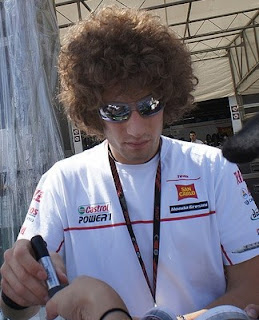World champion who survived horror crash
 |
| Roberto Locatelli in action in the Dutch TT at Assen in 2008, riding a Gilera in the 250cc category |
Locatelli won the 125cc title in 2000, riding an Aprilia for the Vasco Rossi Racing team, winning the Grand Prix of Malaysia, Italy, the Czech Republic, Spain and Japan to finish top of the standings, ahead of the Japanese rider Yoichi Ui.
He finished third in the standings in 2004, his next best performance, but because of the rule excluding riders over the age of 28 from competing in the 125cc class was obliged to focus on the 250cc category.
He enjoyed some success racing with the Toth team, obtaining two podium finishes in the 2006 season, including second place in Valencia, to finish fifth overall. The achievement won him a contract to ride for Gilera in 2007.
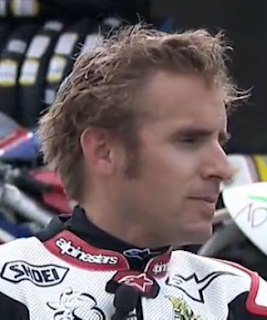 |
| Locatelli was 125cc world champion in 2000, winning five races to top the standings |
He was taken to Cadiz hospital and placed in a medically-induced coma. Tests ruled out brain damage, but every bone in the rider’s face - his nose, mandible, jaw, orbit and cheekbone - was broken, in addition to a fractured left collarbone, a dislocated left ankle, and a punctured lung.
Locatelli underwent reconstructive surgery and remained in a coma for four days before doctors gradually brought him back to consciousness. He had no recollection of the crash.
He was flown back to Italy and admitted to a hospital in Bologna to continue his treatment.
Given that at one time there were fears that he would not survive his injuries, or at best would be told his career was over, Locatelli made a remarkable recovery.
By June 2007 - just three months after the crash - he was back on the track, competing in the Italian GP at Mugello. He finished in a lowly 18th place but continue to work hard at his rehabilitation and by the end of the season was in 13th position in the standings.
He continued to compete for another two seasons. He finished third in the French GP of 2009, his last podium place, and retired at the end of the campaign.
After quitting the track, he remained in motorcycle racing as a television commentator before being appointed as coach at multiple World champion Valentino Rossi’s VR46 Riders Academy.
 |
| Bergamo's beautiful Città Alta - the medieval part of the Lombardy city where Locatelli was born |
Bergamo in Lombardy, where Roberto Locatelli was born, is a fascinating, historic city with two distinct centres. The Città Alta - upper town - has gems of medieval and Renaissance architecture surrounded by the impressive 16th century walls, which were built by the Venetians. The elegant Città Bassa - lower town - still has some buildings that date back to the 15th century, but more imposing and elaborate architecture was added in the 19th and early 20th centuries.
 |
| The countryside around Mugello in northern Tuscany, the historic region north of Florence |
The Mugello is an historic region in northern Tuscany, which takes its name from the Mugello river. Located north of Florence, the region was occupied by the Etruscans, who have left many archeological traces, and subsequently colonised by the Romans. The towns of Borgo San Lorenzo, Scarperia and San Piero a Sieve are part of the Mugello. The Mugello Circuit (Autodromo Internazionale del Mugello) is situated in Scarperia e San Piero.
More reading:
Why Valentino Rossi is one of motorcycle racing's all-time greats
The record-breaking career of Giacomo Agostini
Carlo Ubbiali - the Bergamo racer from another generation
Also on this day:
1466: The birth of Giovanni Sforza, the military leader who married Lucrezia Borgia
1966: The birth of footballer Gianfranco Zola
1982: Paolo Rossi scores a hat-trick against Brazil in the World Cup in Spain
(Picture credits: Locatelli top picture by Thijs Bekkema; Mugello countryside by Christian Lorenz 2017, CC BY-SA 4.0)
Home


